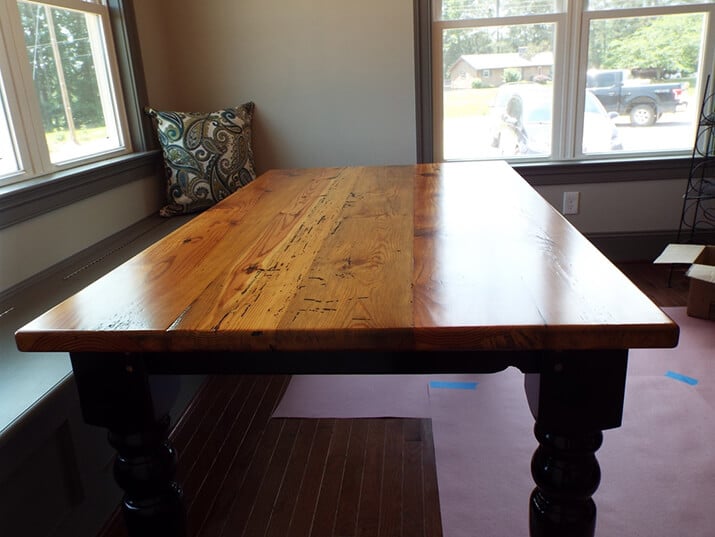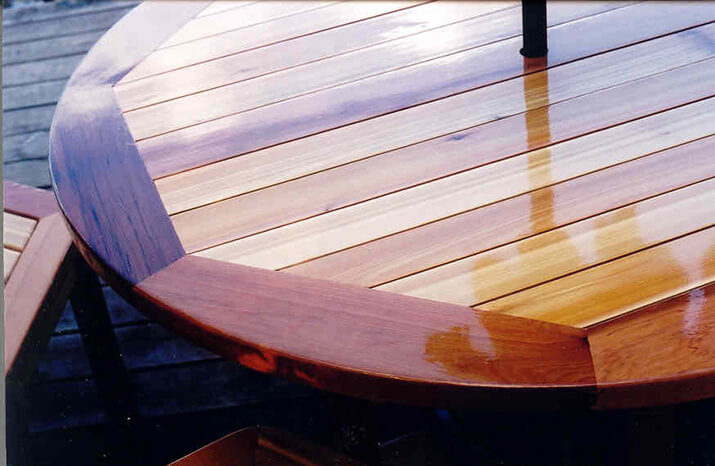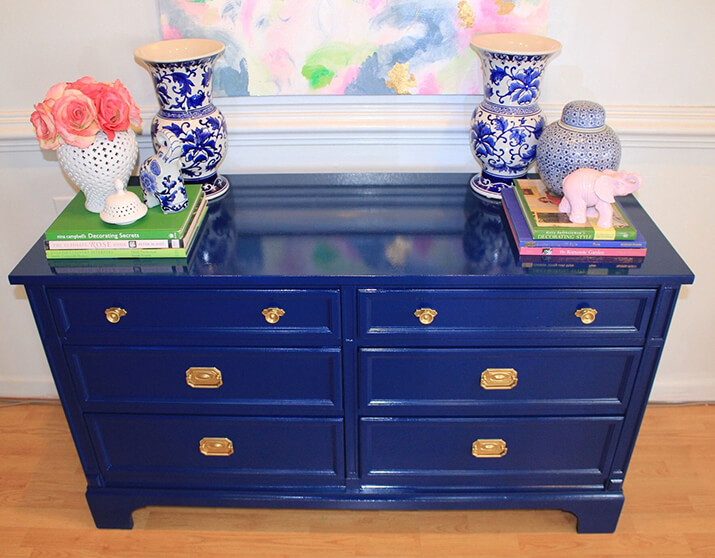design
What’s the Difference between Shellac, Polyurethane, Varnish, and Lacquer?
Polyurethane, shellac, varnish, or lacquer, does it really matter? Of course it does. Some of these top coats dry while others cure. Some are better for outdoors, and others for your antique nightstand. In this article, we’ll cover the differences between each of these so you can make the best choice on a durable finish for your project.
Overview
All of these finishes are used on wood, but each one is a bit different. That means they have different applications, and you should find out which one to use for your project. Here’s a quick overview of each and its drying time:
- Shellac: A natural finish derived from the lac bug, it imparts a warm tone and adds depth to grain. (Drying time: 30 mins)
- Polyurethane: A synthetic finish made from plastic resin and available in water- or oil-based forms. (Drying time: 2 hours for water-based and 6 hours for oil-based)
- Varnish: Made from solvents, resins, and oils, varnish is durable and mainly used outdoors. (Drying time: 24 hours)
- Lacquer: A crystal-clear and durable synthetic finish that can create an ultra high-gloss surface. (Drying time: 1 hour)
And here’s an overview of what each type of finish is best used for:
- Easiest to apply: Polyurethane and sprayed lacquer
- Best clear finish: Lacquer
- Best golden glow: Shellac or oil-based polyurethane
- Easiest to repair: Lacquer
- Easiest to clean up: Water-based polyurethane
- Best for outdoors: Varnish
- Most durable: Polyurethane or lacquer
Shellac

Shellac is made from combining a solvent with the secretion of the female lac beetle, which looks a bit like reddish tree sap. When combined with a solvent like alcohol, the mixture can be used as a finish to protect wood furniture and other items.
Shellac has been used since the 1500s and was the most popular top coat until the 1960s. It looks beautiful and can impart a warm glow along with bringing out depth in wood grain. Shellac is a drying finish, which means the solvent simply evaporates. New shellac can slightly dissolve the previous layer and create a seamless finish.
Shellac is best used for pieces of furniture that don’t come in contact with hot items or alcohol. Spilled alcohol can dissolve the finish, and hot mugs or pans will cause white rings to form. That’s why it’s not a good finish for tabletops.
Fun fact: Shellac is the main finish used in French polishing, which artisans apply to pieces of furniture and even musical instruments like classical guitars.
Polyurethane

Polyurethane is a synthetic finish that cures as it dries. That means it undergoes a chemical process that can’t be reversed. This makes it very durable since it resists a variety of chemicals once cured.
On the other hand, it’s harder to do touch-up work later on if you make mistakes when applying the finish. Multi-coat projects require sanding between coats since the new layer won’t dissolve or bond with the old layer on its own.
This top coat comes in two varieties: water-based and oil-based. The water-based variety dries faster and clearer, while the oil-based variety is slightly more durable but does impart a golden hue to the wood.
People use polyurethane on anything from kitchen tables to bar tops and hardwood floors. It’s a versatile finish and is great for natural wood kitchen cabinets. It’s available in matte to high-gloss textures.
You can spray, wipe, or brush polyurethane onto surfaces. Use a natural brush for oil-based poly and a synthetic brush for water-based poly. The rule here is “Stirred, not shaken.” Don’t shake a can of this top coat otherwise, you’ll create hundreds of tiny bubbles that can ruin your finish.
Varnish

People and manufacturers often use the term “varnish” to signify any type of top coat, but that’s incorrect. Varnish is chemically related to polyurethane, but it has more oil and is more flexible. It also protects well against UV rays, extreme temperatures, and saltwater. This makes it great for outdoor applications, like decks and railings.
Since it’s flexible, it can expand and contract with the wood. People may also use varnish for bathroom furniture for this reason. Varnish also tends to be yellowish in color.
Lacquer

Lacquer has been around for thousands of years. It was originally made from tree sap, but modern versions use acrylic resin or cellulose dissolved in solvents. The solvents evaporate quickly, so most lacquers are sprayed on. It leaves a hard and glossy surface that is very durable.
Many Asian-inspired furniture pieces use lacquer as a top coat, though traditional lacquerware is often handmade and expensive. The Japanese lacquer technique of urushi is still practiced today. In this technique, many layers of lacquer create a deep and radiant finish on furniture pieces, bowls, and writing instruments. The photo below is an urushi lacquer Cup of Noodle created by Japanese designer Nendo.

Now that you have a better idea of the differences between these materials, you’ll be better prepared when you walk down the top coat aisle of your favorite home improvement store.
![See your dream kitchen in 3D [GET YOUR FREE DESIGN]](https://cdn.kitchencabinetkings.com/blog/wp-content/uploads/see-your-dream-kitchen-in-3d.webp)
![Contractor Discount Program: Offering contractors and builders special volume discounts on all applicable orders [LEARN MORE]](https://cdn.kitchencabinetkings.com/blog/wp-content/uploads/contractor-discount-program.webp)
![Explore our photo gallery [GET INSPIRED]](https://cdn.kitchencabinetkings.com/blog/wp-content/uploads/explore-our-photo-gallery.webp)
![What everyone is saying about KCK [READ REVIEWS]](https://cdn.kitchencabinetkings.com/blog/wp-content/uploads/what-everyone-is-saying-about-kck.webp)
![Get a cabinet sample [SHOP SAMPLES]](https://cdn.kitchencabinetkings.com/blog/wp-content/uploads/get-a-cabinet-sample.webp)
![Pay over time, on your terms with Affirm [LEARN MORE]](https://cdn.kitchencabinetkings.com/blog/wp-content/uploads/pay-over-time-on-your-terms-with-affirm.webp)
This is SO helpful! Thanks for taking the time to detail the difference.
What would be best to seal and protect a natural colored wicker table top?
Wicker is rather difficult to seal as it has lots of nooks and crannies. I’d say any liquid based finish is off the table as it would leave points at which it bridges the gap between strands of wicker, taking away from the core of your furniture piece. The bedt option would be a spray on finish I would think
It’s thin and can cover a vast area.
very interesting but i was really looking for info on which product can be applied over another. such as, i know lacquer cannot be applied over enamel because it will “curdle” the enamel. can the shellac, poly and varnish be applied over each other?
I would also like to know!!
Is it true Shellac works universally with all those other top coats? I think I have heard that you can apply ALL those top coats over each other as long as you always have a layer of shellac between them.
I’m not certain for all brands but I have seen on some cans of shellac that it should not be used under a poly finish. Hope this helps.
Truthfully I wouldn’t mix any of them. They are serve the same purpose, as a protective top coat. What you use depends on the meterial you are protecting and where you want it to reside. For instance use spray coatings on things you want protected but not a large layer of finish on. The same goes for nonporus things. If you want multiple coats of protective finish use the same product. Laqueres and varnishes can be dyed for more stained projects to give the final result you’re looking for.
Was looking for advice on which paint type is better for refinishing kitchen cabinets. One company I’m looking at uses urethane and another uses lacquer.
Your choice between urethane and lacquer should depend on your priorities and how you intend to use the cabinets. If you prioritize durability, resistance to moisture and heat, and UV protection, urethane may be the better option. On the other hand, if you value ease of application, quick drying time, and repairability, lacquer could be more suitable.